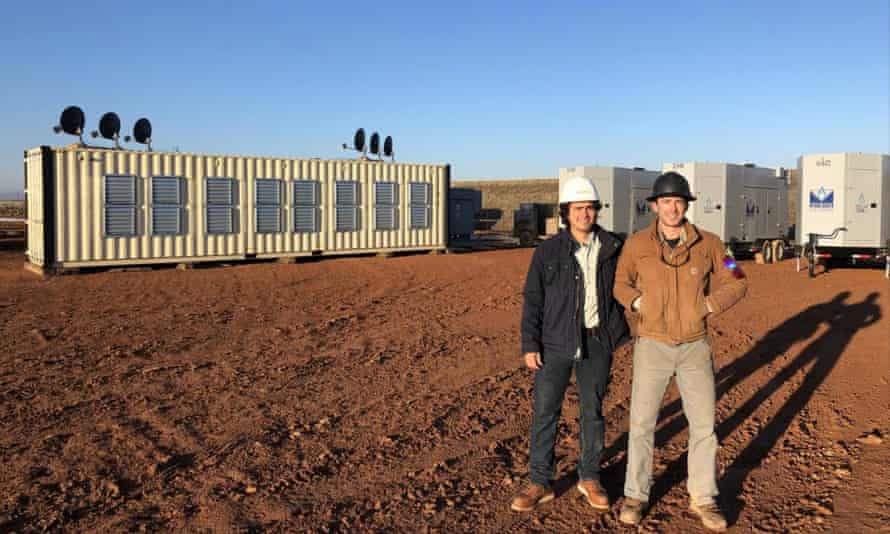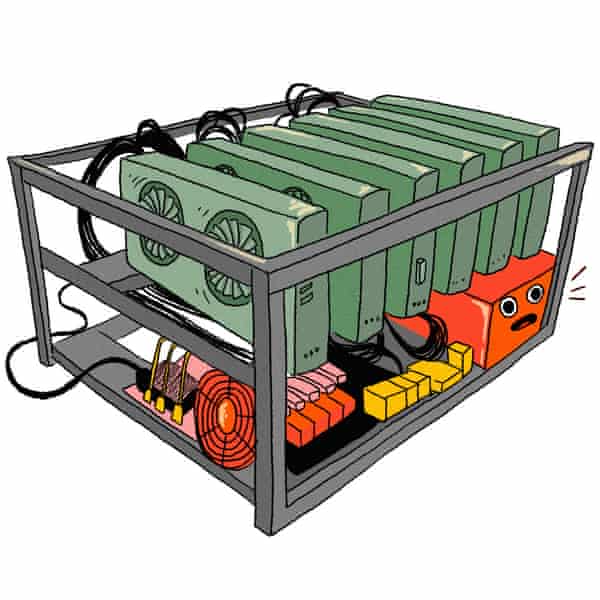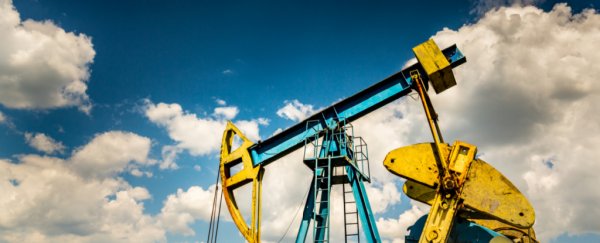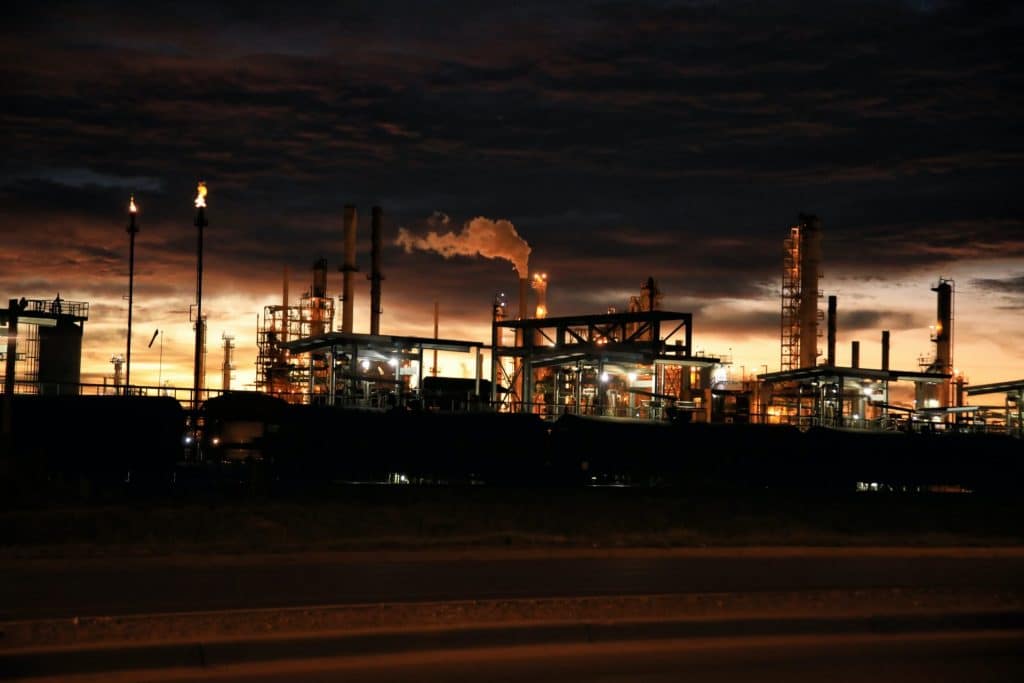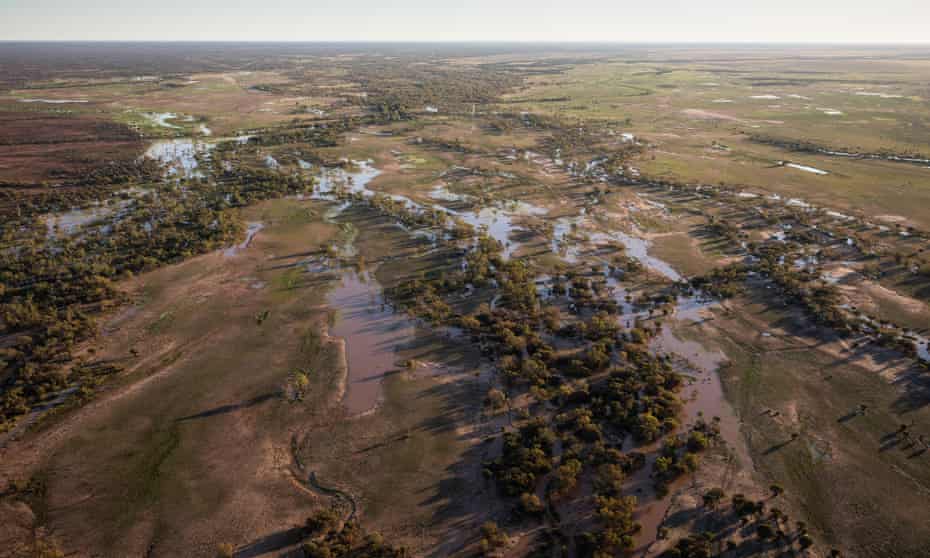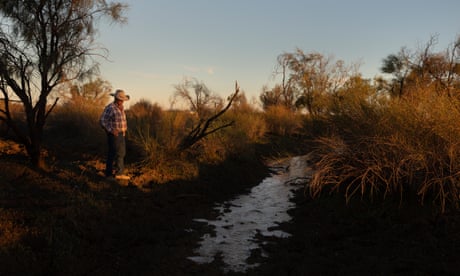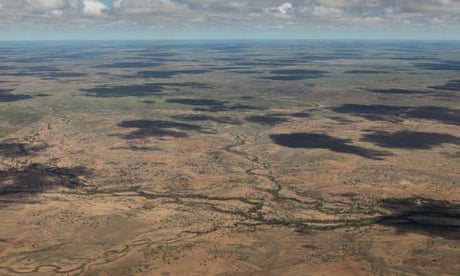Every day the world consumes some 100 million barrels of oil and 60 million equivalent barrels of natural gas.
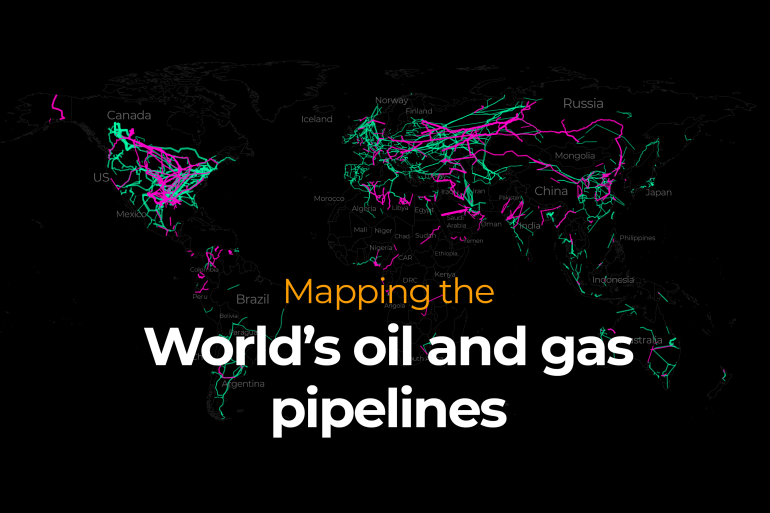
By Mohammed Hussein
Published On 16 Dec 202116 Dec 2021
Over the past 50 years, the world’s annual energy consumption has nearly tripled – from 62,949 terawatt-hours (TWh) in 1969 to 173,340 TWh in 2019.
For centuries, burning coal was the main source of the world’s energy
By the 1960s, rapid advancements in sourcing, transporting and refining oil and gas allowed those energy-dense fossil fuels to overtake coal and become the world’s primary source of energy – which they remain today.
Despite advances in renewable energy, fossil fuels including coal, oil and gas still make up more than 80 percent of the world’s primary energy consumption.
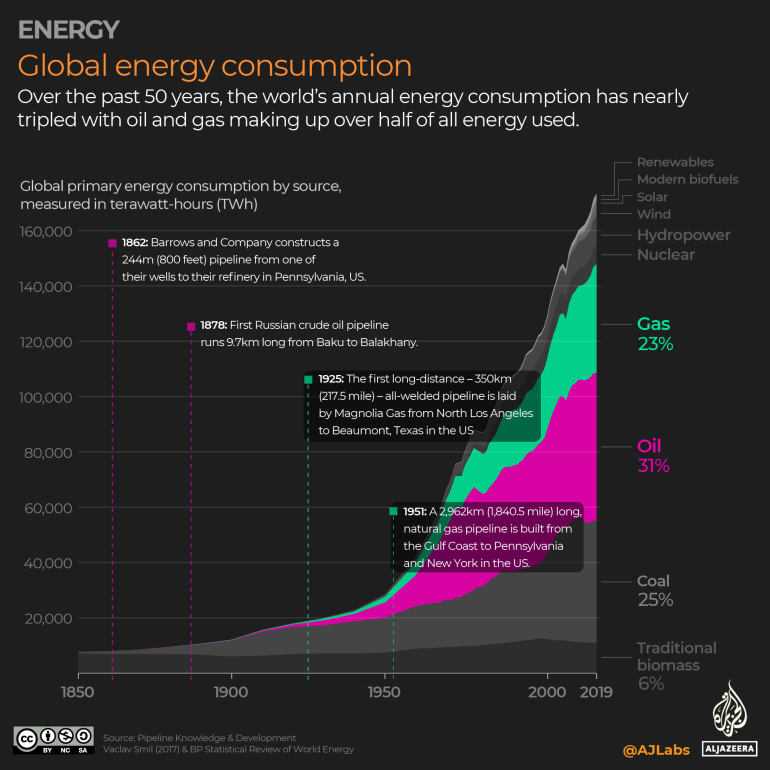
Every day, the world consumes some 100 million barrels of oil and 60 million equivalent barrels of natural gas.
To transport this massive amount of energy, pipelines – usually made out of carbon steel – are widely used.
In the following infographic series, we map the world’s current and planned oil and gas pipelines.
Global pipelines – 30 times Earth’s circumference
According to the Global Energy Monitor, there were at least 2,381 operational oil and gas pipelines distributed across some 162 countries as of December 2020. The combined length of these pipelines is more than 1.18 million km (730,000 miles) – enough to circle the Earth 30 times.
The countries with the longest network of oil and gas pipelines include:
United States – Oil: 91,067km (56,587 miles); Gas: 333,366km (207,145 miles)
Russia – Oil: 38,419km (23,872 miles); Gas: 92,831km (57,683 miles)
Canada – Oil: 23,361km (14,516 miles); Gas: 84,682km (52,619 miles)
China – Oil: 27,441km (17,051 miles); Gas: 76,363km (47,450 miles)
Australia – Oil: 1,636km (1,017 miles); Gas: 23,002km (14,293 miles)
The map below shows pipeline networks across the globe. Pipelines that are shorter than 100km (62 miles) or that have a capacity of less than 6,000 barrels per day are not included.
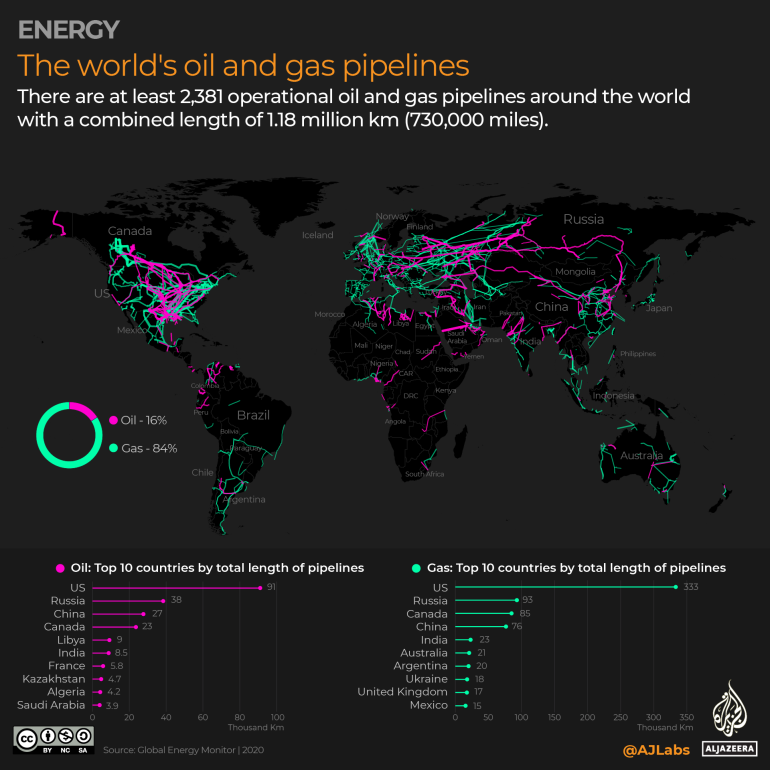
The companies that own most of the of oil pipelines by length include:
Transneft, Russia – 42,383km (26,335 miles) – 15 percent
Enbridge, Canada – 33,750km (20,971 miles) – 12 percent
PipeChina, China – 15,947km (9,909 miles) – 5 percent
The companies that own most of the gas pipelines by length include:
Gazprom, Russia – 103,212km (64,133 miles) – 11.2 percent
TC Energy, Canada – 99,440km (61,789 miles) – 10.8 percent
Kinder Morgan, US – 82,075km (50,999 miles) – 9 percent
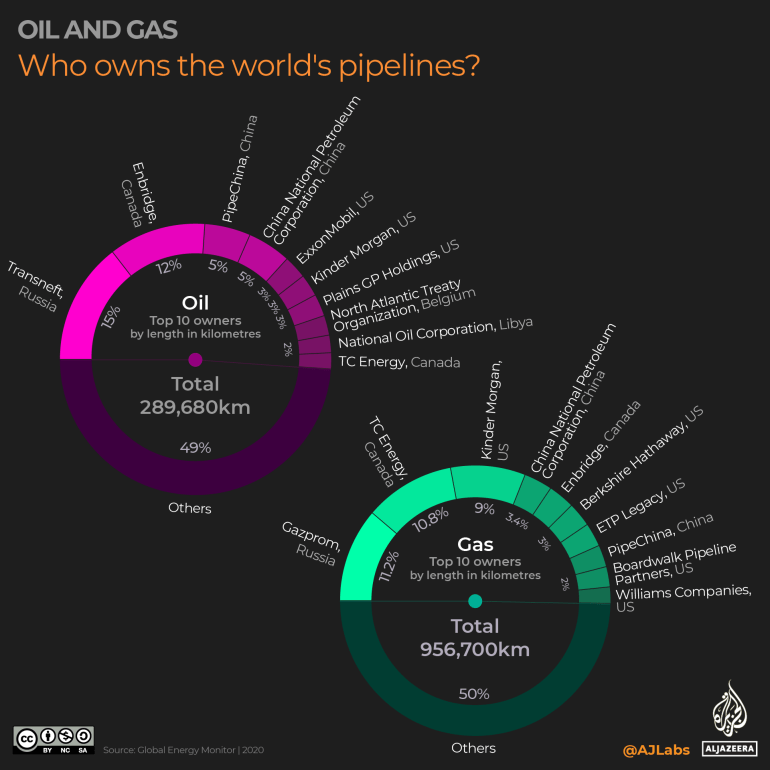
Pipelines by region
Americas
A little more than half (51 percent) of the world’s total oil and gas pipelines by length are in the Americas.
Some of the most noteworthy pipelines include:
The Keystone Oil Pipeline
Length: 3,462km (2,151 miles)
Capacity: 700,000 barrels per day
Start year: 2010
Runs from Alberta province in western Canada down to refineries in Illinois and Texas in the US. In 2021, an expansion to the pipeline known as Keystone XL was cancelled after its permit was revoked by the administration of US President Joe Biden.
Rockies Express Gas Pipeline
Length: 2,702km (1,679 miles)
Capacity: 102 million cubic metres (3.6 billion cubic feet) per day
Start year: 2009
The pipeline system is one of the largest natural gas pipelines ever built in North America. It runs from the Rocky Mountains in Colorado to eastern Ohio, crossing through US eight states.
GASBOL Gas Pipeline
Length: 3,150km (1,957 miles)
Capacity: 30 million cubic metres (1.06 billion cubic feet) per day
Start year: 1999
Also known as the Bolivia–Brazil pipeline, GASBOL is the longest natural gas pipeline in South America.
Colonial Pipeline
Length: 8,850km (5,500 miles)
Capacity: 3 million barrels per day
Start year: 1962
It is the largest pipeline system for refined oil products in the US. In May, hackers launched a cyberattack against the company that disrupted fuel supplies and led to shortages across the East Coast.
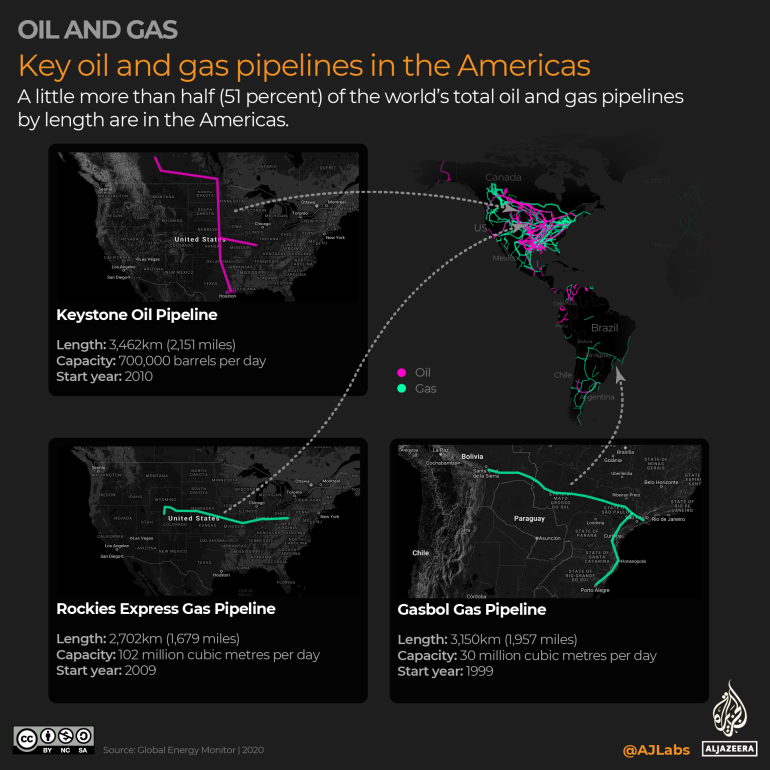
Europe
About a quarter (27 percent) of the total length of the world’s pipelines are in Europe.
Some key pipelines in Europe are:
Druzhba Oil Pipeline
Length: 5,100km (3,169 miles)
Capacity: 1.4 million barrels per day
Start year: 1962
It is the world’s longest oil pipeline and one of the largest oil pipeline networks in the world. It carries oil from the eastern part of Russia to points in Ukraine, Belarus, Poland, Hungary, Slovakia, the Czech Republic and Germany.
Length: 1,660km (1,031 miles)
Capacity: 90 million cubic metres (3.2 billion cubic feet) per day
Start year: 2006
Transports gas from Russia’s Yamal Peninsula to European consumers across Russia, Belarus, Poland and Germany, among other countries.
Greece-Italy Interconnector Gas Pipeline
Length: 800km (497 miles)
Start year: 2010
It is an onshore and offshore natural gas pipeline that runs from Greece to the Apulia region in southeastern Italy.
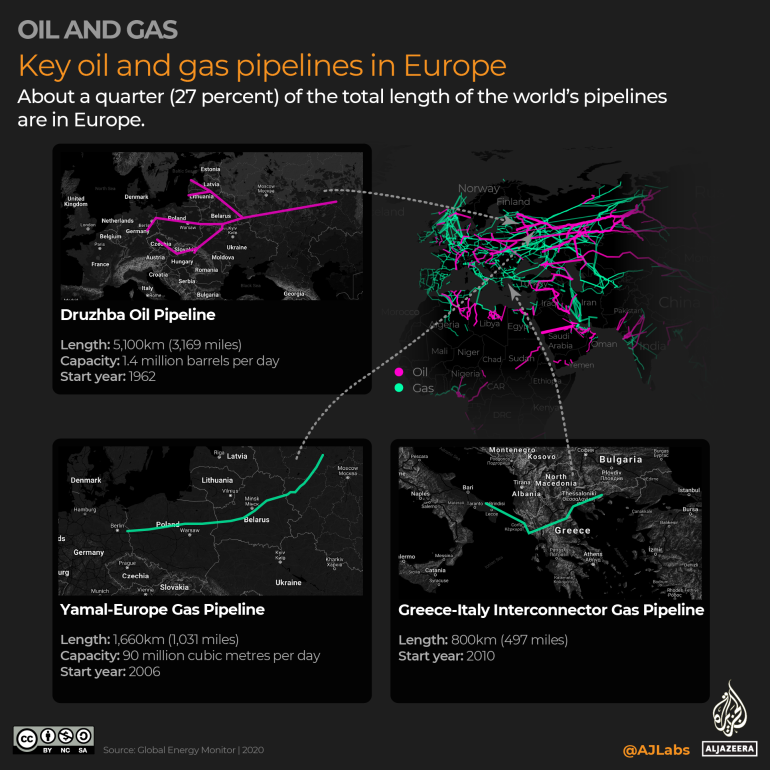
Middle East and Africa
About 6 percent of the total length of the world’s pipelines cross through the Middle East and Africa.
Some of the main pipelines include:
Trans-Mediterranean Gas Pipeline
Length: 2,475km (1,538 miles)
Capacity: 92 million cubic metres (3.3 billion cubic feet) per day
Start year: 1983
Begins in Algeria, passes through Tunisia and crosses the Mediterranean Sea on to Italy and Slovenia.
East-West Crude Oil Pipeline
Length: 1,200km (746 miles)
Capacity: 5 million barrels per day
Start year: 1982
Known as the Petroline and Abqaiq-Yanbu oil pipeline, the Saudi oil pipeline runs from Abqaiq in the east of the country to Yanbu Oil Terminal on the Red Sea coast.
Tazama Oil Pipeline
Length: 1,710km (1,062 miles)
Capacity: 22,000 barrels per day
Start year: 1968
Runs from the Indian Ocean port of Dar es Salaam, Tanzania onto Ndola in central Zambia.
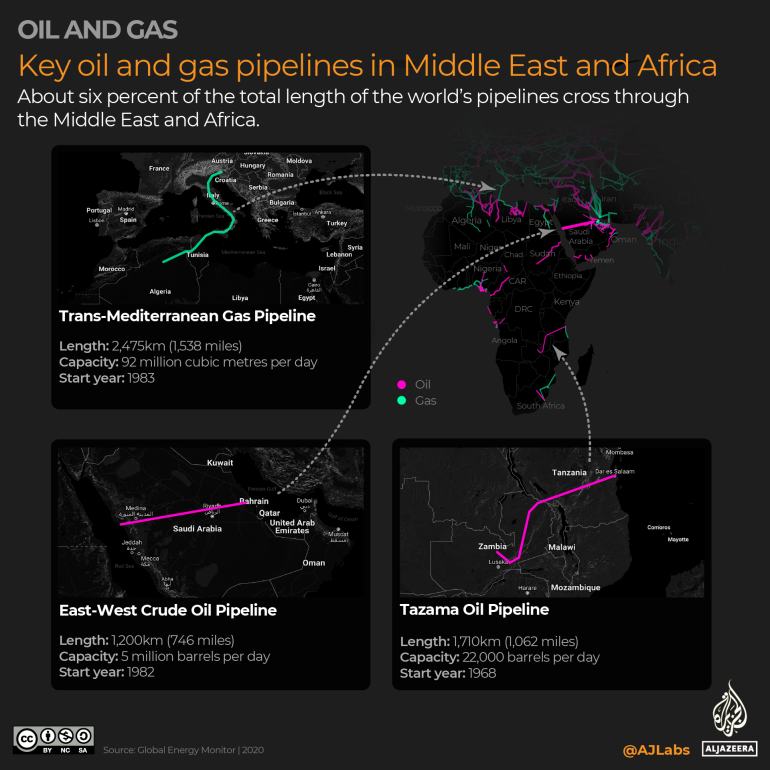
Asia Pacific
About 16 percent of the total length of the world’s pipelines cross through the Asia-Pacific region.
Some of the main pipelines include:
Eastern Siberia–Pacific Ocean Oil Pipeline
Length: 4,857km (3,018 miles)
Capacity: 1 million barrels per day
Start year: 2009
It is used to export Russian crude oil to Asia-Pacific markets, including Japan, China and South Korea.
West-East Gas Pipeline
Length: 18,854km (11,715 miles)
Capacity: 82 million cubic metres (2.9 billion cubic feet) per day
Start year: 2005
Consists of four pipelines that run between Xinjiang in the west of China to Shanghai in the east.
Moomba to Sydney Gas Pipeline
Length: 2,081km (1,293 miles)
Capacity: 13 million cubic metres (463 million cubic feet) per day
Start year: 1976
Runs from gas fields in southern Australia to gas distribution systems in Sydney, Newcastle, Wollongong, and Canberra.

About 200,000km of planned expansions
There are currently at least 212,049km (131,761 miles) of ongoing and planned pipeline expansions costing an estimated $1 trillion.
China’s 32,800km (20,381-mile) expansion of its oil and gas pipeline is the highest in the world. PipeChina, known formally as China Oil and Gas Pipeline Network, will soon become the largest builder of gas pipelines in the world, according to Global Energy Monitor.
The map below highlights where these planned pipelines are located.
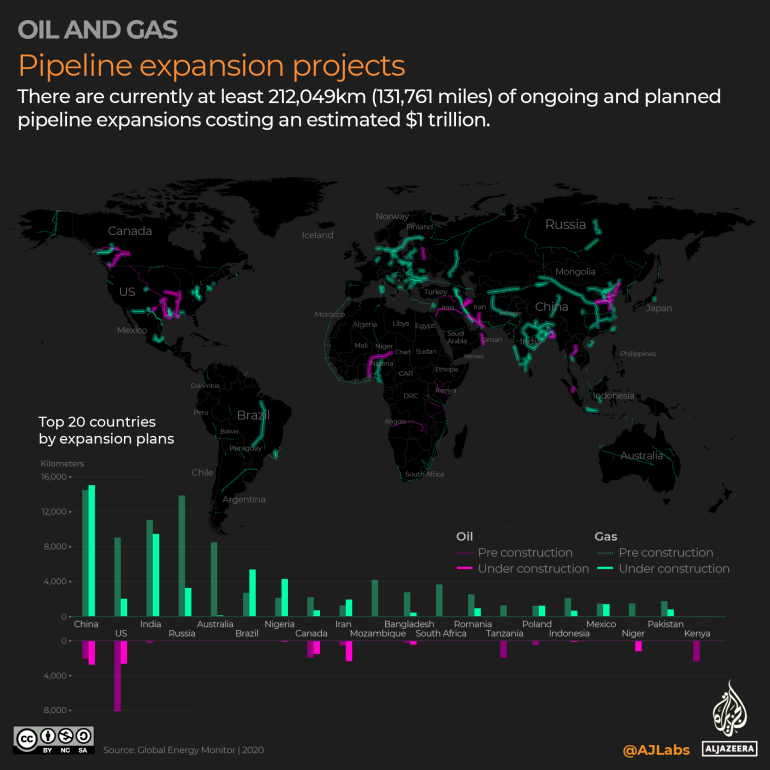
Some notable pipelines include:
Nord Stream 2 Gas Pipeline
This 1,230km (764-mile) gas pipeline is set to run from Ust-Luga in Russia to Greifswald, Germany, and to carry 151 million cubic metres (5.3 billion cubic feet) of natural gas per day. The pipeline will cost $11.6bn, and plans to start operations in 2022.
Capline Oil Pipeline
Running from Pakota, Illinois to St James, Louisiana in the US and scheduled to open in 2022, this pipeline will have a capacity of 300,000 barrels per day and total length of 1,017km (632 miles).
Niger-Benin Oil Pipeline
Stretches from Agadem oil field in Niger to the port of Seme Terminal in Benin. Its capacity is 90,000 barrels per day and its total length is 1,980km (1,230 miles). The pipeline will cost $7bn and is slated to start operations in 2024.
Xinjiang Coal-to-Gas Pipeline
Runs from Xinjiang Autonomous Territory to Shaoguan, Guangdong, China. Its capacity is 82 million cubic metres (2.9 billion cubic feet) per day and it has a total length of 8,372km (5,202 miles). The pipeline was planned to start its operations in 2021.
SOURCE: AL JAZEERA




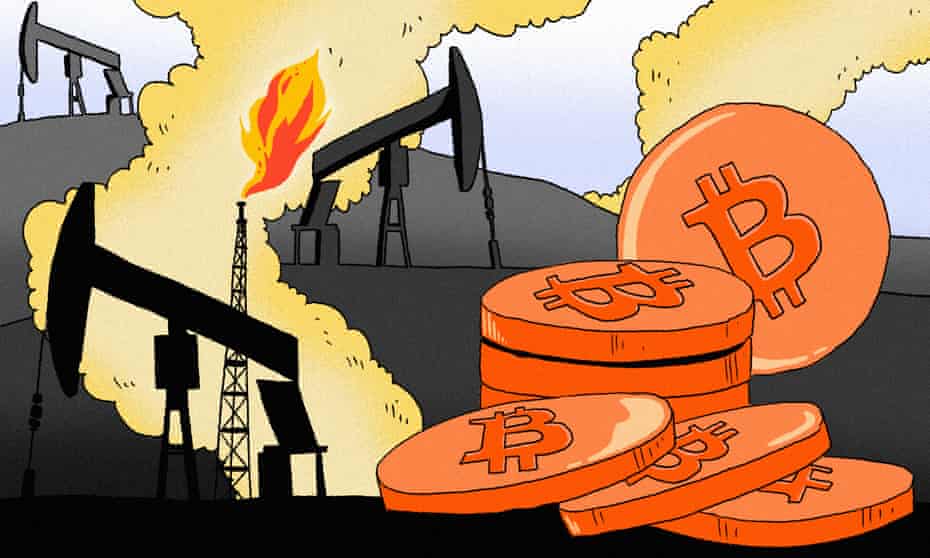
.png)

